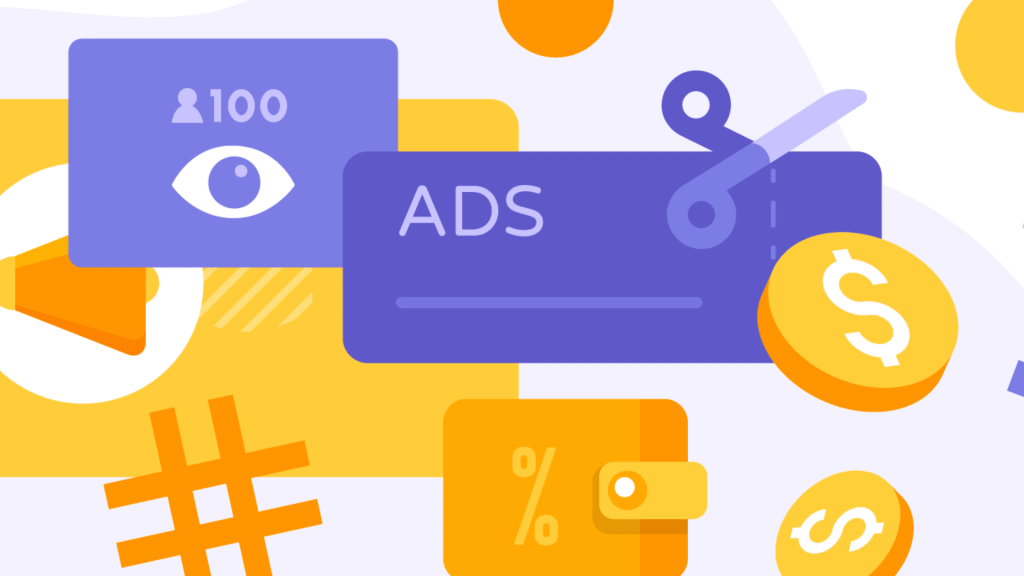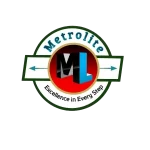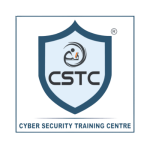Stop the Bleeding: Why Digital Ad Budget is Being Wasted
A great product deserves a great audience, but studies show at least 30% of marketing ads fail to generate returns. The problem isn’t digital advertising itself; it’s a lack of precision, visibility, and strategic control.
(Recent ANA data estimates $26.8B in wasted programmatic spend in Q2 2025 — source.)
This guide reveals the silent killers draining your ad spend and outlines the shift from budget management to ROI mastery.

The 5 Silent Killers of Your Ad Budget
Every rupee lost can be traced to one of these core inefficiencies. Spotting them is the first step toward optimization.
1. Targeting the Wrong Audience (The Conversion Killer)
Spending money on irrelevant users is the fastest way to kill your budget. Advertising to a broad, untargeted audience results in low engagement, poor conversions, and wasted money on non-buyers.
The Symptom: Your Click-Through Rate (CTR) is low, but your Cost Per Click (CPC) is high.
The Cause: Targeting is too broad, or you’re serving sales ads to users who are still in the awareness stage (wrong funnel stage). You are paying for impressions that will never become sales.
2. Paying for Invisible or Fraudulent Traffic (The Trust Killer)
Many businesses assume every click is real, but fraud is rampant. You lose money to bots and low viewability.
The Problem: Ad Fraud (bots, click farms, invalid traffic) and low Ad Viewability (ads placed where they are ignored). More than 56% of ads may never reach a real person.
The Impact: You are paying for fake engagement, inflating your CPC, and receiving misleading performance data. Paying for invisible or fraudulent ads is a direct tax on your budget.
3. Campaign Overspending and Hidden Costs (The Budget Drain)
Complex platforms and intermediary systems silently erode your profits through hidden fees and automated errors.
The Mechanisms: Unmonitored automated bidding can raise costs unnecessarily. The Algorithm Trap means platforms drive up CPC as competition increases, forcing you to pay more for the same audience.
The Solution: Without unified tracking and full transparency, these costs make digital advertising seem prohibitively expensive, leading to frustration and underinvestment in effective channels.
Platform-Specific Budget Traps
Google Ads: Negative Keyword gaps.
Meta Ads: Audience fragmentation/overlap.
4. Ignoring Ad Fatigue and Creative Burnout (The Attention Killer)
Creatives have a shelf life. Running the same ad repeatedly causes Ad Fatigue and Banner Blindness, users stop noticing your message.
The Result: Engagement drops, ad quality scores plummet, and platforms increase your costs due to low relevance.
The Fix: You burn money when you don’t prioritize fresh content and aggressive A/B testing to maintain audience interest.
5. Lack of Unified Performance Tracking (The Accountability Killer)
Managing multi-platform campaigns manually is inefficient and expensive. If you can’t connect ad spend to sales, you’re guessing.
The Risk: You misallocate budgets, overspending on low-performing ads while missing opportunities on effective channels.
The Focus: Lacking the tools for real-time, unified analytics means you can’t answer the core question: “Which channel is truly driving Lifetime Customer Value (LCV), not just clicks?”
Why Traditional Digital Strategy Fails
Traditional marketing fails because it relies on outdated methods and a guess-work approach that can’t keep up with modern complexity.
The Misguided Playbook: Following generic “best practices” or simply copying a competitor rarely works. A one-size-fits-all strategy cannot account for your unique audience or product-market fit.
Siloed Management: Attempting to manually track performance across Google Ads, social media, OTT, and programmatic buys is resource-heavy, inefficient, and leads to costly errors like duplicate spending.
Poor Attribution: Without proper tracking, businesses can’t measure where the money is going. You end up blindly increasing budgets, hoping something will work, instead of knowing what is working.
The Path to Smarter Ad Spend (Your Solution)
Wasted ad spend is not a permanent condition. The future of effective digital advertising is precision-driven, automated, and omnichannel.
The Intent Tale Ad Detox: 3 Steps to Stop the Bleeding and Secure ROI
Wasted ad spend is not your fate. It’s a solvable problem that starts with control, not guesswork. Here is the shift from budget leakage to guaranteed efficiency:
1. Technical Triage: Ruthlessly Block the Fake Traffic 🛡️
You shouldn’t pay for ghost clicks. We move beyond generic “fraud protection” to active defense.
Implement Exclusion Lists: Immediately identify and add large blocks of irrelevant, non-converting IPs to your negative lists. This is the simplest, fastest win.
Set Viewability Standards: In platforms that allow it, set your minimum Ad Viewability threshold to 70%. If a placement can’t guarantee a real human sees 70% of the creative, you don’t pay for it.
Target the Right Moment: Ensure your ads are only served during hours when your audience is awake and ready to convert. Stop subsidizing late-night, low-intent browsing.
2. MarTech Integration: Unify Your Story and Your Data 📊
Siloed campaigns mean guessing, and guessing is expensive. True Omnichannel Unification isn’t about using one platform; it’s about making all platforms speak the same language.
The CRM-First Approach: Connect all ad platforms (Meta, Google, LinkedIn) directly to your CRM and Marketing Automation stack (like HubSpot or Zapier). This allows you to track not just clicks, but Win Rate Delta and Lifetime Customer Value (LCV), proving which rupee actually delivered a durable customer.
Content-Channel Alignment: Use automation to ensure a user who sees a “Problem” ad on Facebook moves to a “Solution” ad on Google, eliminating the costly repetition and burnout of running the same generic ad everywhere.
3. Creative Commitment: Never Suffer Ad Fatigue Again 🔥
Your creative has a shelf life—treat it like a perishable asset. You must commit to a testing rhythm that keeps your relevance score high, forcing platforms to give you lower costs.
The 80/20 Rule of Testing: Allocate 80% of your budget to your proven winning campaigns, but dedicate the remaining 20% exclusively to testing fresh headlines, new visual hooks, and alternative CTAs.
Targeted Burnout: Use platform metrics to limit the frequency a single user sees the same ad to 2-3 times per week. Once the frequency peaks, immediately swap the creative to maintain user interest and keep your Cost Per Click (CPC) low.
The Intent Tale Approach: Eliminating Waste Through Unified Strategy
Success lies in adopting a solution that moves you from budget leakage to guaranteed efficiency:
AI-Driven Precision: Adopt automated systems for real-time adjustments that block fraudulent traffic and ensure you are targeting the right users at the optimal moment.
Omnichannel Unification: Shift away from siloed campaigns. Use unified ad systems to manage all platforms (Display, OTT, Social) from one dashboard, eliminating redundant spending and ensuring message consistency.
Measurable LCV: Prioritize tracking metrics that matter: Lifetime Customer Value (LCV), Win Rate Delta, and Influenced Opportunities. These metrics prove that every rupee delivers durable customer value, not just temporary clicks.
If you are ready to stop subsidizing ad waste and start demanding measurable performance, it’s time to shift your strategy from managing budgets to maximizing ROI.
Conclusion: The Final Word
If you are ready to stop subsidizing ad waste and start demanding measurable performance, it’s time to shift your strategy from managing budgets to maximizing ROI. The control you need isn’t in a new tool; it’s in a smarter framework.
Book Your Free Ad Spend Audit: Stop the Waste Today.
Recommended Reading:
- → Ad Budget Traps and Digital Advertising Mistakes
- → Reduce Your Advertising Expenses with effective strategies
- → Maximize your Ad Budget by improving Ad Visibility
- → Meta Ads and WhatsApp Marketing Sales
Frequently Asked Questions
What is emotional marketing?
Designing brand moments that trigger meaningful feelings so people remember, trust, and act. One emotion per campaign, backed by a true story and proof.
What are the best examples of B2B emotional marketing?
Security-led onboarding (predictability and low risk), resolve-themed turnaround stories in down quarters, and pride-based milestone programs (customer wins, certifications) that lift retention and expansion.
How do leading brands use emotional advertising?
They pick one emotion, tell a specific, true story, show proof (stats, clips), and align format and CTA with that feeling. Then they measure recall, sentiment, and pipeline impact.
What emotional appeals work best in B2B vs B2C?
B2C: joy, nostalgia, belonging for launches and community. B2B: security/calm, resolve, pride to reduce risk and celebrate professional success.
How do I measure emotional marketing ROI?
Track brand recall lift, net sentiment, save/share rate, influenced opportunities, win-rate delta, deal velocity, and lifetime customer value (LCV) lift by campaign cohort.
















